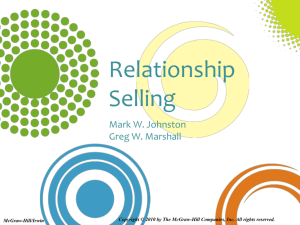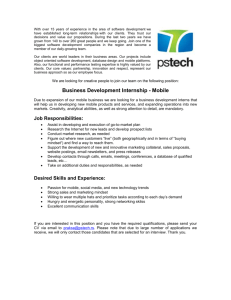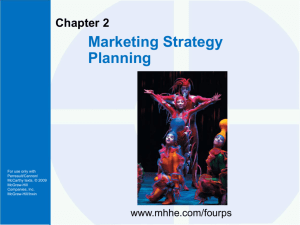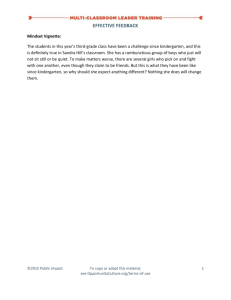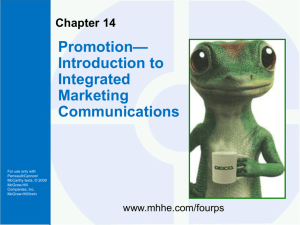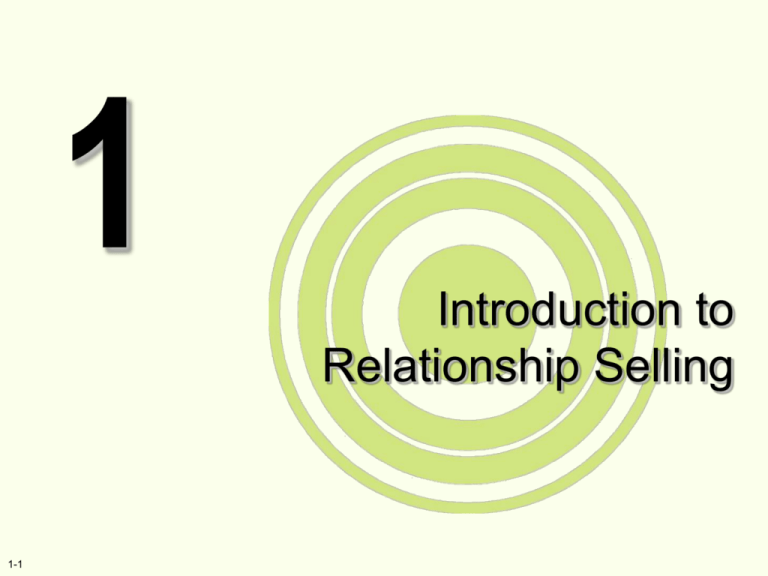
1
Introduction to
Relationship Selling
1-1
INTRODUCTION TO RELATIONSHIP SELLING
Learning Objectives
• Identify and define the concept of relationship selling
• Understand the importance of a customer-centric
organization
• Explain why value is a central theme in relationship selling
• Identify the processes involved in relationship selling
• Identify the elements in managing relationship selling
• Discuss and give examples of the elements of the external
and internal environment for relationship selling
1-2
INTRODUCTION TO RELATIONSHIP SELLING
A Model for Relationship Selling and
Sales Management - Overview
Firms successful at relationship selling
and sales management:
• Are customer-centric
• Are highly customeroriented
• Exhibit a customer
mindset
1-3
INTRODUCTION TO RELATIONSHIP SELLING
Customer Orientation
Firms that have a high level of
customer orientation:
• Focus on understanding customers’
requirements
• Generate an organization-wide
understanding of the marketplace
• Respond effectively with innovative
products and services
1-4
1.1
Test Your Customer Mindset
External Customer Mindset
It is critical to provide value to my company's customers
I am primarily interested in satisfying my company's
customers
I must understand who buys my company's
products/services
I can perform my job better if I understand the needs of
my company's customer
Understanding my company's customers will help me do
my job better
Source: Karen Norman Kennedy, Felicia G. Lassk, and Jerry R. Goolsby, “Customer Mind-Set of Employees Throughout the Organization,” Journal of the
Academy of Marketing Science 30 (Spring 2002), pp. 159-71.
1-5
5
4
3
2
I must understand the needs of my company's customers
6=Strongly Agree
EXHIBIT
1=Strongly Disagree
INTRODUCTION TO RELATIONSHIP SELLING
1.1
Test Your Customer Mindset
Internal Customer Mindset
Meeting the needs of employees who receive my
work is critical to doing a good job
It is important to receive feedback from employees
who receive my work
I focus on the requirements of the person who
receives my work
TOTAL
(Higher total suggests greater customer mindset)
Source: Karen Norman Kennedy, Felicia G. Lassk, and Jerry R. Goolsby, “Customer Mind-Set of Employees Throughout the Organization,” Journal of the
Academy of Marketing Science 30 (Spring 2002), pp. 159-71.
1-6
5
4
3
2
Employees who receive my work are my customers
6=Strongly Agree
EXHIBIT
1=Strongly Disagree
INTRODUCTION TO RELATIONSHIP SELLING
INTRODUCTION TO RELATIONSHIP SELLING
A Model for Relationship Selling and
Sales Management - The Customer
• The customer is at the
center of the model
• Return on customer
investment
• Lifetime value of a
customer
1-7
INTRODUCTION TO RELATIONSHIP SELLING
INNOVATION
1.1
Want to Think Like a Customer?
Mistakes to Avoid Always
1. Doing it your way, not the customer’s way
2. Focusing on your objectives, not the customer’s
3. Pushing for a client meeting as though it is the
end game
4. Pushing the customer
5. Failing to listen
Source: John R. Graham, “Think Like a Customer – Or Lose the Sale, “American Salesman (January 2002), p.3.
1-8
McGraw-Hill/Irwin © 2005 The McGraw-Hill Companies, Inc. All rights reserved.
INTRODUCTION TO RELATIONSHIP SELLING
INNOVATION
1.1
Want to Think Like a Customer?
Mistakes to Avoid Always
•
•
•
•
Keeping your sales strategy secret
Making the sale the goal
Giving too many or too few options
Writing off the customer too soon
Source: John R. Graham, “Think Like a Customer – Or Lose the Sale, “American Salesman (January 2002), p.3.
1-9
McGraw-Hill/Irwin © 2005 The McGraw-Hill Companies, Inc. All rights reserved.
INTRODUCTION TO RELATIONSHIP SELLING
A Model for Relationship Selling and
Sales Management – Value Creation
• Value is the bundle of
benefits the customer
derives from a purchase
• Give-get ratio
• Value creation - adding
value for a customer
beyond an isolated
transaction
1-10
INTRODUCTION TO RELATIONSHIP SELLING
EXHIBIT
1.3
Time Investment in Each Stage of the Sale
Developing an understanding
of the buyer’s needs
Value-added selling
Presenting your solution
Closing the sale
1-11
Traditional selling
INTRODUCTION TO RELATIONSHIP SELLING
A Model for Relationship Selling and
Sales Management – Relationship Selling
Process elements of relationship selling:
• Using information
• Communicating the sales
message
• Negotiating for win-win
solutions
• Closing the sale and followup
• Self-management
1-12
INTRODUCTION TO RELATIONSHIP SELLING
INNOVATION
1.3
The Importance of Follow-up
• Attrition for first-year accounts is more than
twice that of long term accounts due to:
•
•
•
Early problems that sour the relationship
No formal servicing system
Communication breakdowns
• Avoid the early break-up by:
•
•
•
Saying thank-you
Seeking feedback early
Responding quickly
Source: Erin Strout and Michael Weinreb, “Please Come Again,” Sales and Marketing Management (February 2003), pp. 47-48.
1-13
McGraw-Hill/Irwin © 2005 The McGraw-Hill Companies, Inc. All rights reserved.
INTRODUCTION TO RELATIONSHIP SELLING
EXHIBIT
1.4
Components of the Internal Environment
Goals, objectives,
culture
R&D and technological
capabilities
Personnel
The Firm
The
Custome
r
Service capabilities
Financial resources
Production and supplychain capabilities
1-14
INTRODUCTION TO RELATIONSHIP SELLING
Internal Environment
Southwest Airlines' corporate
environment
• Places the employee at the center of its
business model
• Promotes fun
• Hires people by “tryouts”
• Lends itself to a favorable service culture
1-15
INTRODUCTION TO RELATIONSHIP SELLING
EXHIBIT
1.5
Components of the External Environment
Legal and political
Economic
The Firm
The
Custome
r
Natural
Technological
Social and cultural
1-16

